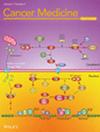Interventions to Support Transitions in Care Among Patients With Cancer: A Scoping Review
Abstract
Background
The cancer journey from diagnosis through survivorship is complex and involves care from many healthcare providers across a variety of settings. Navigating the transitions between care providers and settings can be improved through interventions. The objective of this study was to map and characterize evidence on interventions to improve transitions in care among patients with cancer.
Method
Six databases were searched to identify relevant studies that described or evaluated interventions to support transitions in care for patients with cancer. Data on the interventions, the type of transition in care, type of cancer, and outcomes (including measure of effectiveness) were abstracted. Data were synthesized and analyzed using descriptive statistics.
Result
Of the 38,876 data sources identified, 150 were included. Most included studies were from the United States and were observational studies exploring interventions to facilitate the transition from treatment to survivorship (followed by interventions for the transition from hospital to home) among patients with breast cancer (followed by gastrointestinal cancers, lung cancers, and hematologic cancers). Interventions that were found to be effective were most commonly those that facilitated the transition from diagnosis to treatment and for the transition from hospital to home.
Conclusion
This comprehensive synthesis is an important resource for those trying to improve transitions in care for patients living with and beyond cancer. Despite the large body of evidence identified, gaps remain; there is a paucity of studies exploring transitions in care during cancer treatment and among some cancers (e.g., brain tumors, head and neck, pancreatic).


 求助内容:
求助内容: 应助结果提醒方式:
应助结果提醒方式:


